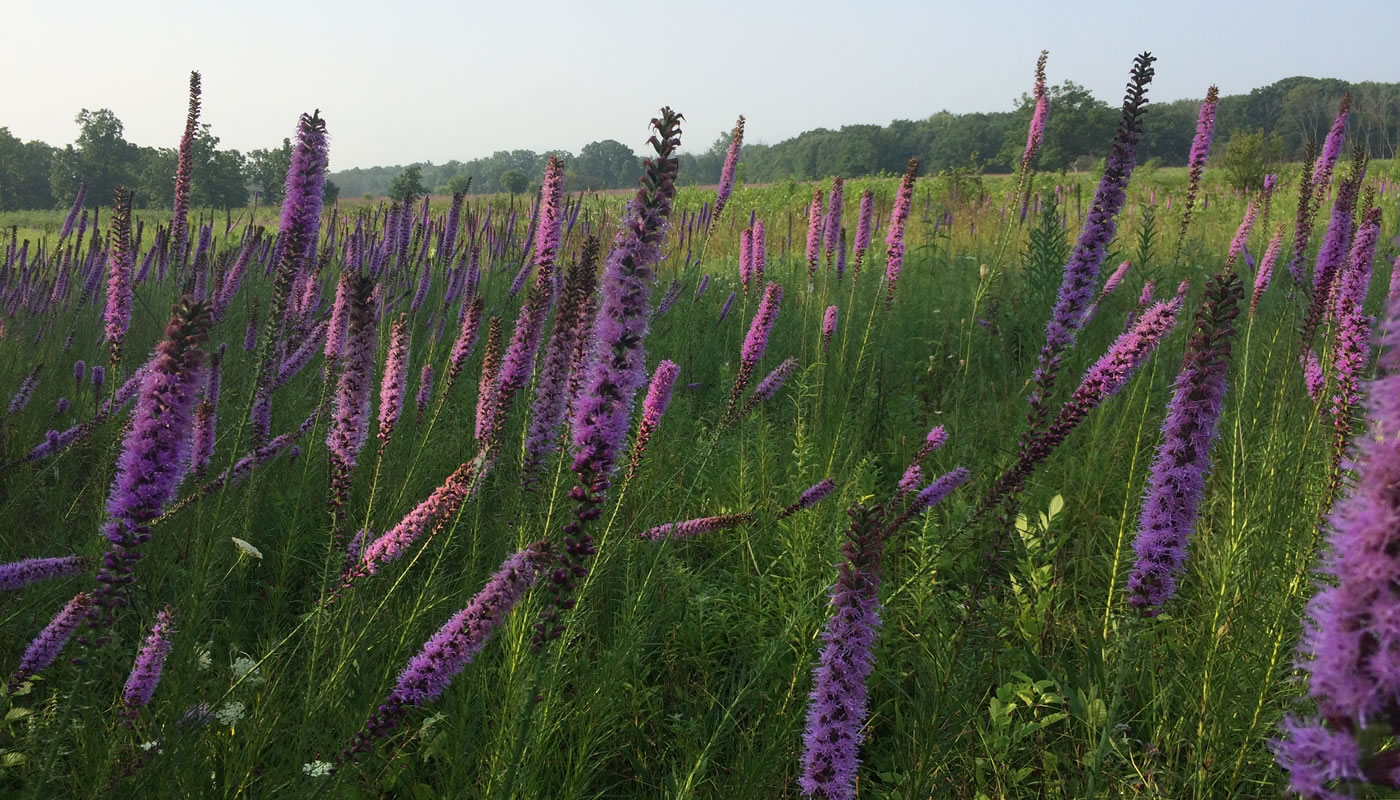As the summer season winds down, late-blooming prairie wildflowers are providing a striking natural display throughout the Forest Preserves of Cook County.
A prairie, French for “meadow,” is an open grassland with no trees. Prairies feature a colorful variety of grasses and forbs (wildflowers). Did you know? Illinois is known as the “prairie state” because much of the state’s landscape was once prairie habitat. Today, prairies are one of the rarest types of habitat due to extensive human intervention, mainly agriculture. In order to create row crop agriculture, machines churned the prairie’s nutrient rich soil and destroyed its structure.
Because of this habitat degradation, it is difficult to restore farmed prairie lands back to their former glory. But despite the challenges, the Forest Preserves, volunteers and partners have been attempting to bring some of our former agricultural lands back to prairie. For these reasons and many more, preserving and restoring remnant prairies is all the more important.
Within the Forest Preserves’ 70,000 acres, visitors can experience numerous prairie types, including black soil prairies, sand prairies, wet prairies, dolomite prairies and gravel hill prairies. Each type has distinct characteristics, and offer visitors a unique experience.
Common prairie flowers
Where to Visit a Prairie
- Northwest Cook Cunty: Bluff Spring Fen, Shoe Factory Road Nature Preserve, Deer Grove-East
- North: Cook County Somme Prairie Nature Preserve, Miami Woods Prairie, Linne Prairie, Kloempken Prairie
- Central Cook County: Wolf Road Prairie, Brookfield Prairie
- Southwest Cook County: Theodore Stone Prairie, Cap Sauers Holding Nature Preserve
- South: Kickapoo Prairie, Powderhorn Prairie, Sand Ridge Nature Preserve, Dolton Prairie, Calumet City Prairie

